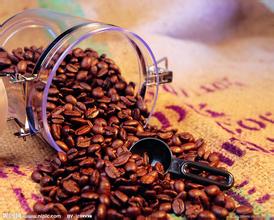The definition of Fine Coffee Wave an introduction to the Historical Origin of the three Coffee waves in the World
Coffee history tide fine coffee has a strict grading system. In general, raw beans are preserved as "parchment coffee beans" in the form of endocarp after processing, and the endocarp is removed before export. Go through a strict grading process to ensure the uniformity of quality. And the protection in the process of preservation and transportation is very important, such as the control of temperature and humidity, the control of ventilation, avoiding odor adsorption and so on. If these are not done well, then the high-grade beans will no longer be refined by water treatment. The coffee beans with less impurities can be obtained by the water washing method, but if the water quality and time are not properly controlled during the fermentation process, the coffee beans will easily be infected with the sour taste of excessive fermentation. and dry beans also need to pay attention to timely re-inspection to prevent coffee beans from being contaminated by wet ground and sundries. Processed beans should be dried in time, and drying should also be searched with a certain degree. Generally, the moisture content of processed beans is 11% 13%. Insufficient drying is easy to make beans moldy. Excessive drying is easy to make beans aging and affect the harvest of high-quality coffee beans with flavor. The best way to harvest is to use manual harvesting. That is, only mature coffee fruits are picked to prevent coffee fruits with inconsistent maturity from being picked at the same time. Because those immature and overripe fruits will affect the balance and stability of coffee taste, so there are higher requirements for the growing environment of high-quality coffee beans that need to be picked frequently and carefully during harvest. Generally grow at an altitude of 1500 meters or even more than 2000 meters above sea level, with appropriate precipitation, sunshine, temperature and soil conditions. Some world-famous coffee beans also have a special geographical environment, such as the alpine clouds in the Blue Mountains, the free shade provided by Kona's afternoon "Flying Cloud", and the volcanic ash soil of Antigua. These provide conditions for the growth of boutique coffee beans must be excellent varieties, such as the original bourbon species, mocha species, Tippica species, the coffee beans produced by these trees have unique aroma and flavor. Far from other tree species can be compared, but the relative yield is low, in recent years in order to pursue disease and insect resistance and yield improvement, there are many improved tree species, such as Kenya to promote a large number of high-yield rurial11 species, but the taste and quality are greatly reduced, of course, can not be called "boutique coffee around 2000, began to appear a wave of boutique coffee. Emphasize the regional taste of coffee, the taste of coffee produced in each region is different, so the boutique coffee plantation began to appear, no longer defective beans, promote shallow roasting, highlight the personality of coffee itself.

Important Notice :
前街咖啡 FrontStreet Coffee has moved to new addredd:
FrontStreet Coffee Address: 315,Donghua East Road,GuangZhou
Tel:020 38364473
- Prev

What is the amount of coffee powder extracted from coffee-coffee powder consumption in siphon pot
How much coffee powder is extracted from coffee-in fact, the amount of coffee powder pre-soaked and steamed in the siphon pot is roughly the same, that is, the surface of coffee is wet, so that coffee pressed powder expands rapidly, making pressed powder form a good filter layer. Theoretically, the expansion space of coffee powder is about 1-2mm, and the expansion makes the coffee powder particles form a uniform bubble gap, so that water passes through quickly and evenly. Prepreg supply
- Next

The difference between sunburned and washed coffee beans is illustrated by the process of coffee solarization.
Coffee tanning process chart-the difference between sun-cured and washed coffee beans is very common in Brazil. The natural washing method is very similar to the water washing method, except that the natural washing method uses a high-pressure washing machine to remove the mucous membrane of the coffee surface, thus skipping the fermentation process. Several coffee and raw bean processing companies in Brazil and Colombia have patented this method and become
Related
- What brand of black coffee is the most authentic and delicious? what are the characteristics of the flavor of the authentic Rose Summer Black Coffee?
- Introduction to the principle and characteristics of the correct use of mocha pot A detailed course of mocha pot brewing coffee is described in five steps.
- Which is better, decaf or regular coffee? how is decaf made?
- How much is a bag of four cat coffee?
- How about four Cat Coffee or Nestle Coffee? why is it a cheap scam?
- Which is better, Yunnan four Cats Coffee or Nestle Coffee? How about cat coffee? is it a fake scam? why is it so cheap?
- How about Cat Coffee? what grade is a hoax? which instant coffee tastes better, four Cat Coffee, Nestle Coffee or G7 coffee?
- Process flow chart of coffee making-Starbucks coffee making process what coffee tastes good at Starbucks
- The top ten best coffee beans in the world Rose summer coffee or Tanzanian coffee tastes good
- Yunnan four cat coffee is good to drink?_four cat coffee is a big brand? four cat blue mountain coffee is fake?

